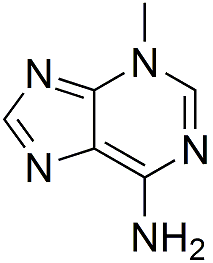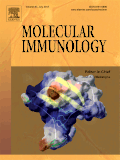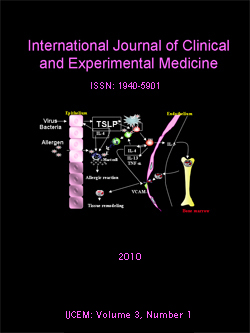All AbMole products are for research use only, cannot be used for human consumption.

3-Methyladenine is a selective autophagy and phosphoinositide 3-kinase (PI3K) inhibitor for Vps34 and PI3Kγ with IC50 of 25 and 60 nM, respectively. 3-Methyladenine significantly shortens the duration of nocodazole-induced-prometaphase arrest. 3-Methyladenine inhibits class I and class III PI3K in different temporal patterns. 3-Methyladenine blocks autophagy through its effect on class III phosphatidylinositol 3-kinase (PI3K), the activity of which is required for the nucleation and assembly of the initial phagophore membrane. 3-Methyladenine treatment does not alter the degree of hemorrhage compared with the SAH group.

Sci China Life Sci. 2025 Mar 07; .
The oligosaccharyltransferase subunit PsSTT3A regulates N-glycosylation and is critical for development and virulence of Phytophthora sojae
3-Methyladenine (3-MA) purchased from AbMole

Int Immunopharmacol. 2025 Apr 13;155:114643.
Immunomodulatory roles of autophagic flux and IFIT in human ectocervical cells upon Trichomonas vaginalis infection
3-Methyladenine (3-MA) purchased from AbMole

Pharmaceuticals. 2025 Apr 22;18(5), 605.
Investigating the Effect and Mechanism of 3-Methyladenine Against Diabetic Encephalopathy by Network Pharmacology, Molecular Docking, and Experimental Validation
3-Methyladenine (3-MA) purchased from AbMole

Discover Oncology. 2024 Jun 15.
Lycorine attenuated proliferation and induced apoptosis on imatinib-resistant K562 cell by inhibiting autophagy
3-Methyladenine (3-MA) purchased from AbMole

Cancer Res. 2023 Jan 18;83(2):251-263.
MEX3A mediates p53 degradation to suppress ferroptosis and facilitate ovarian cancer tumorigenesis
3-Methyladenine (3-MA) purchased from AbMole

Front Immunol. 2023 Mar 14;14:1120996.
ROS-AMPK/mTOR-dependent enterocyte autophagy is involved in the regulation of Giardia infection-related tight junction protein and nitric oxide levels
3-Methyladenine (3-MA) purchased from AbMole

Food Science and Human Wellness. 2023 Jun 1.
3-epi-betulinic acid 3-O-β-D-glucopyranoside (eBAG) induces autophagy by activation of AMP-activated protein kinase in hepatocellular carcinoma
3-Methyladenine (3-MA) purchased from AbMole

Naunyn Schmiedebergs Arch Pharmacol. 2023 Dec 2.
Dihydromyricetin alleviates inflammatory bowel disease associated intestinal fibrosis by inducing autophagy through the PI3K/AKT/mTOR signaling pathway
3-Methyladenine (3-MA) purchased from AbMole

Infect Immun. 2023 Nov 16;91(11):e0010323.
Effects of Trichinella spiralis and its serine protease inhibitors on autophagy of host small intestinal cells
3-Methyladenine (3-MA) purchased from AbMole

J Orthop Surg Res. 2023 Feb 22;18(1):129.
Osteogenic effects of rapamycin on bone marrow mesenchymal stem cells via inducing autophagy
3-Methyladenine (3-MA) purchased from AbMole

J CLIN PHARM THER. 2023 Sep 26;Issue (9): 969-978.
Molecular mechanism of artesunate attenuates the release of proinflammatory cytokines from macrophages
3-Methyladenine (3-MA) purchased from AbMole

Int J Ophthalmol. 2023 Sep 18;16(9):1456-1464.
Effects of autophagy inhibitor 3-methyladenine on a diabetic mice model
3-Methyladenine (3-MA) purchased from AbMole

CNS Neurosci Ther. 2022 Nov 24.
Acupuncture promotes nerve repair through the benign regulation of mTOR-mediated neuronal autophagy in traumatic brain injury rats
3-Methyladenine (3-MA) purchased from AbMole

J Ethnopharmacol. 2022 Sep 15;295:115398.
Yangjing Zhongyu decoction facilitates mitochondrial activity, estrogenesis, and energy metabolism in H2O2-induced human granulosa cell line KGN
3-Methyladenine (3-MA) purchased from AbMole

Evid Based Complement Alternat Med. 2022 Apr 6;2022:4445293.
Zhenzhu Xiaoji Decoction Induces Autophagy and Apoptosis Cell Death in Liver Cancer Cells through AKT/mTOR and JAK2/STAT3 Signaling Pathway
3-Methyladenine (3-MA) purchased from AbMole

Oxid Med Cell Longev. 2021 Jun 14;2021:6662225.
Impaired Autophagy Induced by oxLDL/ β 2GPI/anti- β 2GPI Complex through PI3K/AKT/mTOR and eNOS Signaling Pathways Contributes to Endothelial Cell Dysfunction
3-Methyladenine (3-MA) purchased from AbMole

BMC Cancer. 2021 Feb 25;21(1):195.
Blockage of AMPK-ULK1 pathway mediated autophagy promotes cell apoptosis to increase doxorubicin sensitivity in breast cancer (BC) cells: an in vitro study
3-Methyladenine (3-MA) purchased from AbMole

Int J Case Rep Orthop. 2021;3(2):129-134.
Rapamycin's osteogenic effects on bone marrow mesenchymal stem cells through triggering autophagy
3-Methyladenine (3-MA) purchased from AbMole

Int J Neurosci. 2020 Mar 11;1-15.
Autophagy-deficiency in Bone Marrow Mononuclear Cells From Patients With Myasthenia Gravis: A Possible Mechanism of Pathogenesis.
3-Methyladenine (3-MA) purchased from AbMole

Front Pharmacol. 2018 May 14;14;9:334.
Resveratrol Sensitizes Carfilzomib-Induced Apoptosis via Promoting Oxidative Stress in Multiple Myeloma Cells
3-Methyladenine (3-MA) purchased from AbMole

Mol Immunol. 2017 Jul;87:132-140.
IL-37 induces autophagy in hepatocellular carcinoma cells by inhibiting the PI3K/AKT/mTOR pathway
3-Methyladenine (3-MA) purchased from AbMole

Int J Clin Exp Med. 2017;10(5):7553-7562.
Combination of icotinib and wogonin induces apoptosis and autophagy to overcome acquired resistance in lung cancer harbouring EGFR T790M mutation
3-Methyladenine (3-MA) purchased from AbMole
| Cell Experiment | |
|---|---|
| Cell lines | U251 cells |
| Preparation method | Western blotting was performed to determine the expression levels of ubiquitinated proteins, PDI and Grp78. The expression levels of ubiquitinated PDI and Grp78 were increased following the inhibition of autophagy by treatment with 3-MA |
| Concentrations | 10 mM |
| Incubation time | 12 h |
| Animal Experiment | |
|---|---|
| Animal models | Male Wistar rats |
| Formulation | saline |
| Dosages | 3.5 mg/kg |
| Administration | i.v. |
| Molecular Weight | 149.15 |
| Formula | C6H7N5 |
| CAS Number | 5142-23-4 |
| Solubility (25°C) | Water 5 mg/mL warmed |
| Storage |
Powder -20°C 3 years ; 4°C 2 years In solvent -80°C 6 months ; -20°C 1 month |
| Related PI3K Products |
|---|
| T-00127-HEV1
T-00127-HEV1 is a phosphatidylinositol 4-kinase III beta (PI4KB) inhibitor with an IC50 of 60 nM. |
| PI3Kγ inhibitor AZ2
PI3Kγ inhibitor AZ2 is a highly selective PI3Kγ inhibitor (The pIC50 value for PI3Kγ is 9.3). |
| NIBR-17
NIBR-17 is a pan-class I PI3K inhibitor with suitable pharmacokinetic properties and inhibits tumor growth. |
| RV-1729
RV-1729 is an inhibitor of the phosphatidylinositol 3-kinase-δ (PI3Kδ). |
| Vulolisib
Vulolisib is a potent and orally active phosphatidylinositol 3-kinase (PI3K) inhibitor, with IC50 values of 0.2 nM, 168 nM, 90 nM and 49 nM for PI3Kα, PI3Kβ, PI3Kγ and PI3Kδ, respectively. |
All AbMole products are for research use only, cannot be used for human consumption or veterinary use. We do not provide products or services to individuals. Please comply with the intended use and do not use AbMole products for any other purpose.


Products are for research use only. Not for human use. We do not sell to patients.
© Copyright 2010-2024 AbMole BioScience. All Rights Reserved.
